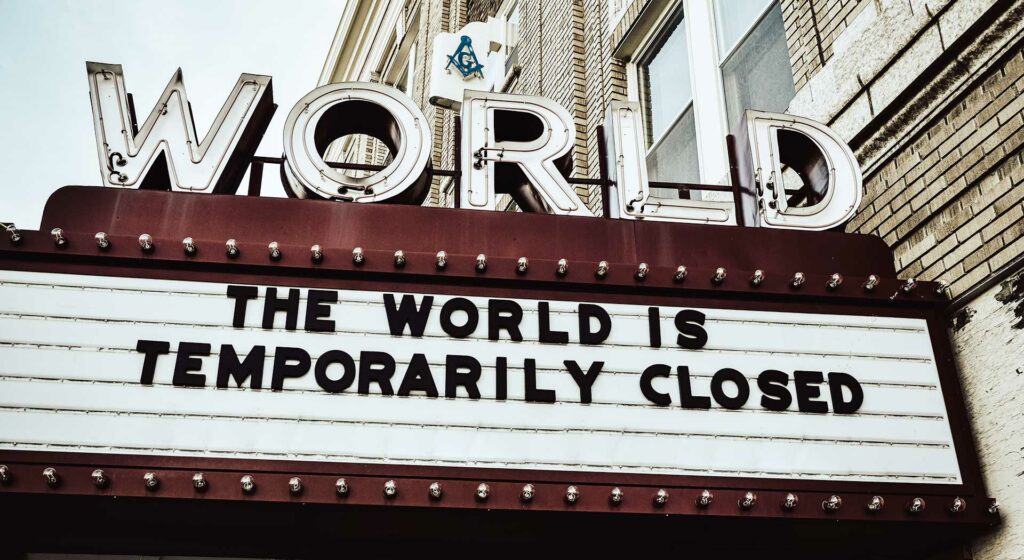Employee Experience: Inside Schneider Electric’s Revolution
Schneider Electric share how they turned 2020’s challenges into an opportunity for their employee experience.
Why You Should Care
COVID-19 highlighted three new areas of focus for HR practitioners within their organizations
These resulted in five challenges, hence opportunities for businesses to improve the Employee Experience for their employees
A recent HBR report found 40% expressed low self-confidence in their ability to manage workers remotely
84% of job seekers say the reputation of a company is important and 50% say they wouldn’t work for anyone with a bad reputation
The pandemic has changed our HR landscape with three major imperatives impacting the employee experience:
- Culture and Trust
- Data and People Analytics
- Rebalancing of the workforce in a digital, fair, and empathetic way
Very few events, if any, have had such a deep impact on organizations as COVID-19 has and is continuing to have. And while the HR function has been a core element of most businesses, especially large ones, it has never been in the spotlight like it is today. What we imagined as the future of work and the future of HR a few years/months ago, has now become the present and brings along some very interesting challenges for HR leaders. The way organizations answer to the current challenges will shape their culture, reputation, and employee experience for many years to come.
Here is a non-exhaustive list of challenges, hence opportunities, that we believe the COVID-19 crisis has created:
1. Culture and redesigned Talent Experiences
The pandemic has called for a redesigning of job descriptions, flexible work arrangements, and creating job structures that can attract, engage, and retain a diverse workforce with diverse needs. We will need to rewrite the definition of performance and potential, one that fosters agility, resilience, and inclusion. Adaptability and collaboration will be top factors and contributions of the team vs those of an individual will lead the way for talent evaluations in the future. This will also call for organizations training their managers to change the ‘out of sight – out of mind mindset’ and move to measuring ‘output’ and ‘results’ instead. As per an HBR report, about 40% of the supervisors and managers in their study expressed low self-confidence in their ability to manage workers remotely, which creates a big need for training managers in how to devolve job autonomy, and to check-in with employees rather than check-up on them.

Trust is no longer optional, and any form of micro-management needs to be strongly discouraged in order to foster a culture of productivity, collaboration and emotional wellbeing. In this new world, empathy, empowerment and inclusion will now be defining traits in evaluating leaders.
2. Preserving or enhancing the Employer Brand
Most organizations are currently faced with tough choices and are struggling to make decisions that meet financial imperatives while protecting their people. But more than what these organizations decide, how they execute their decisions is going to have a long-lasting impact on their employer brand. The recent dismissal by Uber of 3000+ employees over a zoom call is a prime example of how NOT to do it. Whether an organization takes a sensitive approach or a more callous one, will make a big difference in its prospects. How will these organizations support existing employees? More and more organizations will now be judged on whether they will provide a fair severance package in case of a layoff? Whether they provide outplacement and career counseling assistance? Answers to these paint an accurate image of the company’s leadership and culture today and in the future. These answers will be remembered for a long time to come. As the statistics show – When deciding on where to apply for a job, 84% of job seekers say the reputation of a company as an employer is important and 50% of candidates say they wouldn’t work for a company with a bad reputation – even for a pay increase! Clearly, how an organization took care of its employees/alumni during this crisis will quickly become a differentiator and USP for their employer brand.

3. “The war for Talent is over. Talent won”
Albeit the mass lay-offs, we are still living in a talent market. The fundamentals of our economy being a talent market – where talents choose where they want to be – is still there. This is especially accentuated when we consider remote work becoming a norm and the whole world practically becoming one talent pool. This talent omnipresence is seen now not just externally but also internally. For larger organizations, there is a substantial need to balance the demand and supply of talent, creating the imperative to create an internal opportunity marketplace and an internal gig-economy. Having implemented a similar initiative at Schneider Electric, we can only vouch for the value and ROI such an initiative brings for an organization with thousands of hours of work unlocked as productivity. With a truly open talent market, anyone, located anywhere, can apply for an internal job or a project, at any time – which results in not just optimizing the workforce productivity but also allowing your employees to follow their aspirations, learn on the job and build their own career paths. This, in turn, increases employee engagement, streamlines their upskilling and reskilling, and gives employees a sense of purpose, satisfaction, and an improved workplace experience. The organization benefits as well – with cost savings due to internal hiring and additional productivity due to unlocked hours and increased engagement – a well-implemented and truly open talent market can contribute directly to both the top and bottom lines.
As per a benefits report by Fortune, since the pandemic, 86% of companies are encouraging employees to access telemedicine or telehealth services if they need care.
4. Total redesign of Rewards and Benefits
Rewards is another area which will necessitate major reforms beyond the short term pay adjustments and COVID-focused cost-cutting measures being taken today. Rewards composition will need to be rethought and redesigned as the meaning of rewards and benefits change for employees. More employees will increasingly look at health benefits, insurance/medical care and medical leaves even if it calls for adjusting some component of their income. There will be demands for more investments on Work From Home (WFH) benefits and maintaining hygiene/safety in the workplace. There will also be an increase in the expectation of benefits like child care, family care and coverage for COVID like uncertain situations, supported by telehealth, telemedicine and related insurances.

As per a benefits report by Fortune, since the pandemic, 86% of companies are encouraging employees to access telemedicine or telehealth services if they need care. With the concept of hot seats and working from home becoming the new normal, the pay structures and flexible benefits will also need to align with the needs of working from home vs working from the office, from paying for presence to paying for skills and proven performance, and from paying a bigger lump sum for yearly incentives to smaller sum for short term incentives combined with higher fixed pay. A study by Korn Ferry has suggested that “predictability of pay” will be an increasingly important factor going forward, which means that employees will place a greater premium on a higher fixed base pay, rather than highly variable and potentially sky-high ‘performance-linked’ incentives. As more employees set up home offices, companies like Adobe and Oracle are already setting an example by covering home office setup costs and allowing employees to use office equipment at home where necessary. And the organizations will have to find a way of balancing these costs with the savings that can come from infrastructure, logistics and utility costs required for running a physical office facility.
transformING people analytics from hindsight and insights to foresights will have an incredible impact on HR and it’s ability to influence the business
5. Data Analytics and predictive/ prescriptive capabilities
In addition to all that’s already been written, COVID-19 has shown organizations, big or small, how important it is to have robust people data analytics tools. This trend will only be reinforced going forward, as more organizations will focus on doing more with less and optimizing their workforce. Socrates “You don’t know what you don’t know” has rarely rung truer – Organizations with no laser-focused knowledge of their employee base will struggle to make the right decisions – decisions that could have a lasting impact. Most organizations find themselves today in the “Descriptive Analytics” (What happened) or the “Diagnostic Analytics” (What lead to it) stages, failing to move to “Predictive Analytics” (What will happen all things remaining equal) or “Prescriptive Analytics” (How specific actions will create the desired future). Striving to transform people analytics from hindsight and insights to foresight will have an incredible impact on HR and the ability to influence the business strategy and employee experience, especially considering the amount of data and learnings that will be generated across various initiatives and programs taken up by organizations to combat the COVID crisis.
Sign up to the UNLEASH Newsletter
Get the Editor’s picks of the week delivered straight to your inbox!

Global VP of Talent
Andrew Saidy is an HR and Talent executive, nominated as one of the Top 20 HR Thought Leaders to Follow in 2021.
